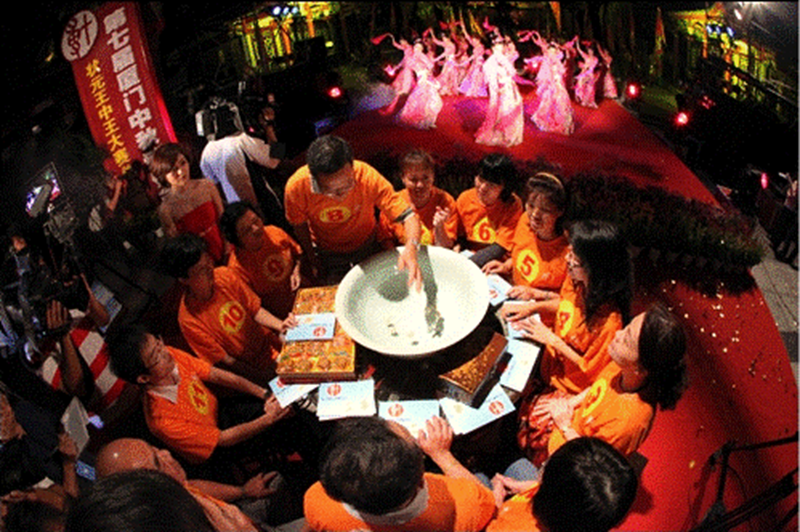
People play mooncake gambling during the Mid-Autumn Festival. [Photo/fujian-szwhg.chaoxing.com]
Originating in Xiamen, the Mid-Autumn Festival tradition of mooncake gambling spread widely across Taiwan and the southern Fujian region, with Xiamen being the most prominent hub for this unique custom. It has been recognized as a national-level intangible cultural heritage representative item in the category of folk customs.
The exact origins of mooncake gambling are uncertain, but historical records date back to the Ming (1368-1644) and Qing (1644-1911) dynasties in southern Fujian and Taiwan. Scholars during the Mid-Autumn Festival in the early Qing Dynasty, would throw dice to compete for a large mooncake with a Yuan character, symbolizing the desire to achieve success in the imperial examinations. This practice is believed to be the precursor to the mooncake gambling.
Over time, people developed the folk activity based on the ancient imperial examination system integrating traditional game rules into widely celebrated mooncake gambling. This folk activity combines traditional games, emphasizing strong participation, equal and fair gaming rules, and simplicity in methods.
By rolling six dice, participants attain titles representing the hierarchical levels of the feudal imperial examination system and win corresponding prizes. Then the game concludes, and the prizes are shared among all participants.
This tradition thrived in the 1920s and 1930s, starting as a form of entertainment within families and gradually expanding to a popular and healthy festive activity.
Mooncake gambling has been passed down spontaneously for over 300 years, serving as a means to bring families, relatives, and friends together during the Mid-Autumn Festival, fostering unity, harmony, and reunion.

Copyright © General Office of Fujian Provincial People's Government
Website Identification Code 3500000049Registration Number: 15003084
All rights reserved. The content (including but not limited to text, photo, multimedia information, etc) published in this site belongs to fujian.gov.cn.
Without written authorization from fujian.gov.cn, such content shall not be republished or used in any form.